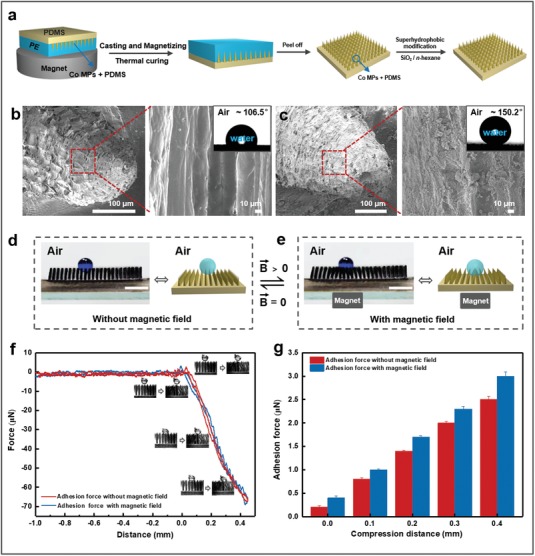Figure 1.

Fabrication of superhydrophobic magnetic microcilia array (superhydrophobic MMA) surface and droplet infiltration behavior with and without an applied magnetic field. a) Schematic of the fabrication procedure of the superhydrophobic MMA surface. b,c) Morphology and corresponding water droplet contact angle photographs of the magnetic microcilia before and after superhydrophobic modification, respectively. d,e) Switched water droplet infiltration states on the superhydrophobic MMA surface before and after the application of the magnetic field. When a magnet (0.37 T) was placed below the superhydrophobic MMA surface, the microcilia reshaped themselves from a fully upright to a concave cluster structure. Correspondingly, the water droplet sank into the microcilia. The scale bars represent 5 mm. f,g) Adhesion force–distance charts for the water droplets (V = 10 µL) on the superhydrophobic MMA surface before and after application of the magnetic field. The results show that the adhesion force between the microcilia and water droplets is low, indicating that the droplets can be easily moved into and out of the collapsed concave region, thus following the moving magnetic field. The droplets can advance easily because the superhydrophobic MMA surface is concave under the applied magnetic field. Furthermore, it is easy for the droplets to retreat, because the superhydrophobic MMA surface is a superhydrophobic and low‐adhesion surface.
